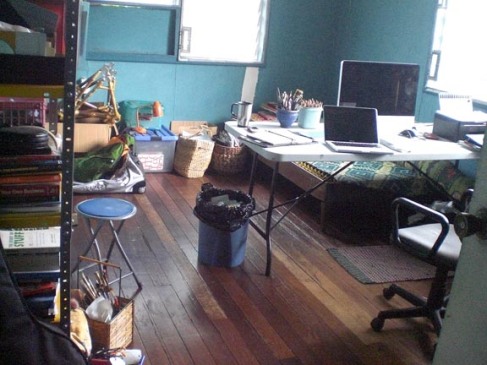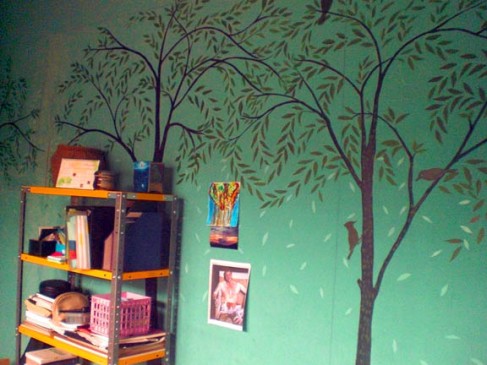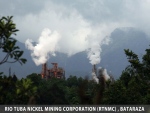I ran my first marathon in 2007, the Pasig River Heritage Marathon upon the suggestion of friends. The registration fee cost 500 pesos, which was extremely cheap, compared to today’s fees which start at a thousand.
There was a time when Milo and PAL international marathons were THE races to be in. In the 80s and 90s, marathons were as numerous as fingers in my hand.
My favorite running place was the UP DIliman Campus, with its 8-kilometer perimeter lined with trees and quiet roads. I used to run in the mornings and see a handful of runners, all males. On Sundays mornings, a group of male running executives called RUNNEX Club ran in their colorful garb doing the perimeter loops. Nowadays, the oval is quite busy with troops of early risers, noontimers and office workers. On Sundays, it gets mighty crowded along with bicycle riders, kids learning on their trainer wheelsets.
I discovered running in high school. In Mt. Makiling, where I spent my teen years I got invited to a Saturday morning ‘jog’. I wore cotton short, shorts and terry socks. My shoes were my school rubber shoes. We went out before sunrise and ran from the student dorms down to the winding road to the auditorium, about 3kms down. The chilly air stung my legs while stink bugs flew into my mouth.We watched the sunrise at the slope of the National Arts Center, enjoying the wide view of Laguna de Bay and the nearby towns around it. We hiked back up for breakfast.
We did it again the following weekend and the next.
In college, I got ‘drafted’ into the track and field varsity team. After ‘auditioning’ in the high jump, the coach decided my legs were better suited for middle distance. I started training daily and got ready for competition. My first pair of ‘branded’ shoes were adidas. I still wore cotton clothes and socks. Training was 4pm until 7 in the evening at the UP Track. I started waking up at 5am in the dorm, run loops at the empty academic oval before breakfast and classes. My specialty was the 3,000 meters since they did not have 5 and 10kilometer events yet.
After college, I ran for 10 kms and a couple of half marathons but it really was until 2007 that I got to do 42 kilometers. Running in those days were more intuitive, though there were a couple of friends who had more scientific approach, but I really just ‘got up and ran.’
Back to the Pasig River Marathon. It’s the tough but very nice, the route taking us through historical parts of the river through 7 cities. It was point to point, circuitous course, weaving through barrios and side roads, bridges and at times, traffic choke points. The Pasig River Marathon had the distinction of being the first Boston-qualifier.
The inaugural Camsur Marathon at the CWC in September 26, 2010 was my eighth 26-miler and the first outside Northern Luzon. I had gone with friends from the Greenhills running club, a group with several master-age veterans (having more than 50 marathons under their belt). Camsur was my eighth marathon and it was my last run with my former teammate J. The started under the full moon with firework. The race had Spectacular views of scenic Mt. Mayon. I ran about 10 kilometers of it side by side with J who chatted while we struggled with the 10kph pace. J griped loudly as we ran but he always turned up at the marathons and ultras.
The QC inaugural marathon was my first and only bandit run. I’ve always wanted to run the length of the 6-lane Commonwealth to Fairview and back to Philcoa and on this occasion, the road was closed to traffic until 10 am. Unfortunately, I had missed the registration cut off and had to run unregistered. The route included entering the tightly guarded La Mesa Dam and anyone without a bib was turned away by the police. I re-traced my steps going out to Fairview to meet the runners coming out through the other end of La Mesa Dam, which meant my actual distance exceeded 42 by about 3 kilometers.
On my second attempt at the QC, I made the registration, only to stop at kilometer 13 and do an early turnaround toward Philcoa. I had underestimated the distance and burned out.
The Condura Marathon which had a fast route running along the Skyway, remains as my fastest effort to date. I had trained sufficiently, took the first half easily and ran faster in the second half. However, my 2007 Milo marathon qualifier effort,which I did the same year as the Pasig race, was slower by merely 2 minutes, not a very significant number.
My slowest marathon was my second Milo 42km in 2008. It was the last leg of a first-ever ultramarathon attempt, a 100-km noncompetitive group run in Metro Manila with the Pinoy Ultra Runners. We had started at the UP Diliman Campus 7:30 pm the night before, going out to Katipunan and C-5 toward Fort Bonifacio in Taguig, to Mackinley then EDSA before turning to Espana by Quezon Avenue, towards Quirino in Luneta at the Milo Marathon starting line. Finish time was 7 hours back at the grandstand. I had been cramping and wore flip flops when I crossed the finished line, sleepless and red-eyed.
My first overseas 42 was the December Singapore Marathon, which happened after an MRI knee scan in October 2011. I’ve had long-standing knee pains which I have often failed to bring to the doc. I’ve signed up for a sub-4 bib, but by October couldn’t run without pain especially after tempo runs. I could barely go up and down the stairs without a painful limp, and iced my legs almost daily.
The Standard Chartered Singapore Marathon which started at 4:00 am, had a narrow route for 25,000 runners passing through its tunnels and converging a few kilometers before finish line. I finished at 4:15 after cramping 3 times.
My post-Singapore Marathon is pretty much rest and rehabilitation, having learned a lot of biomechanics, anatomy, Pilates along the way (will discuss separately). I like to believe the best years (read:PR) are waiting to happen.
Here’s a summary of my 42s (DNF included)
#1 2007 February 26 Pasig River Heritage International Marathon 4:22
#2 2007 July Milo Marathon Metro Manila Eliminations 4:08
july milo marathon finale leg of 100-km ultramarathon 7:00
#3 2008 Subic International Marathon 4:10
#4 2008 February Pasig River Heritage International marathon 4:28
#5 2009 October Inaugural Quezon City International Marathon 4:25 (based on my watch)
#6 2009 November Pasig River Marathon
#7 2010 February Condura Run for the Dolphins Marathon 4:06
#8 2010 September Camsur Marathon 4:11:55
2010 QC International Marathon (DNF)
#10 2011 Standard Chartered Singapore Marathon 4:15
On my wish list:
Corregidor Marathon
New York City marathon
Tokyo Marathon
HK Standard Chartered marathon

Sharing the stage with FVR and Top ten finishers , Everest ladies Carina and Janet(leftmost and right most respectively). future PUR teammate Olive is second from left.

running the pasig river heritage marathon. that’s me in my red hat

i am starting to fatigue here. my knee hardly lifts and my shoulders hike up.

the mask of pain at km41







































































